Every year on April 24th, Armenian Genocide Remembrance Day culminates at the Genocide Museum overlooking the city. I was in Yerevan this year and was able to take the long walk to pay my respects.
If you are considering booking travel or signing up for a new credit card please click here. Both support LiveAndLetsFly.com.
If you haven’t followed us on Facebook or Instagram, add us today.
History of the Armenian Genocide Memorial Day
Admittedly, I didn’t have a great understanding of the Armenian genocide on my first visit to Armenia in January of this year. Since then, I’ve educated myself about the mass killing of Armenians.
“On 24 April 1915, the Ottoman authorities arrested and deported hundreds of Armenian intellectuals and leaders from Constantinople. At the orders of Talaat Pasha, an estimated 800,000 to 1.2 million Armenians were sent on death marches to the Syrian Desert in 1915 and 1916. Driven forward by paramilitary escorts, the deportees were deprived of food and water and subjected to robbery, rape, and massacres.” – Wikipedia
Final estimates range from 600,000 to 1.5 million Armenians perished during the death march and subsequent acts (like starvation) at the hands of the Ottoman empire according to Genocide studies.
The country declared April 24 as a day of Remembrance of the Armenian Genocide and public holiday.
Making the Long Walk
In Yerevan, thousands of Armenian people and visitors like myself, make the long walk from the city to the Memorial sitting high atop the city. Depending on the time of day and origination point, the walk can vary from about three to seven miles. Mine started at the base of the Armenian Brandy Museum.
I started my walk at nearly 9 pm and as such, I had the longer march to the top. My initial cursory understanding was that the roads were closed due to crowds, some 200,000 are expected in a city of approximately a million people. However, with understanding, it’s not just a practical measure but also one that reflects the death march walked by the victims of the Armenian genocide.
Note: There are some shuttles for those who prefer to participate but would be challenged by the walk. It’s not limited to the handicapped, but despite constant shuttle trips, each one was full to the brim. If you’re able to walk the distance, it’s recommended to leave space for those who might not be able to do so.
The walk does include segments along a highway and while the road was closed, vehicles were permitted to drive it sparsely, though they do drive fast. Participants should be aware of this.

Leaving the memorial, it’s possible to make a shorter walk to an area just beyond the base and order a Yandex taxi.
The Memorial
The memorial rests behind the Sport and Concert complex. Massive steps lead up to the memorial, though they are used only for departures on April 24th. It’s built in the town of Tsitsernakaberd and is sometimes called simply that, though English searches (especially on google maps) are just as likely to return results for the Armenian Genocide Memorial.
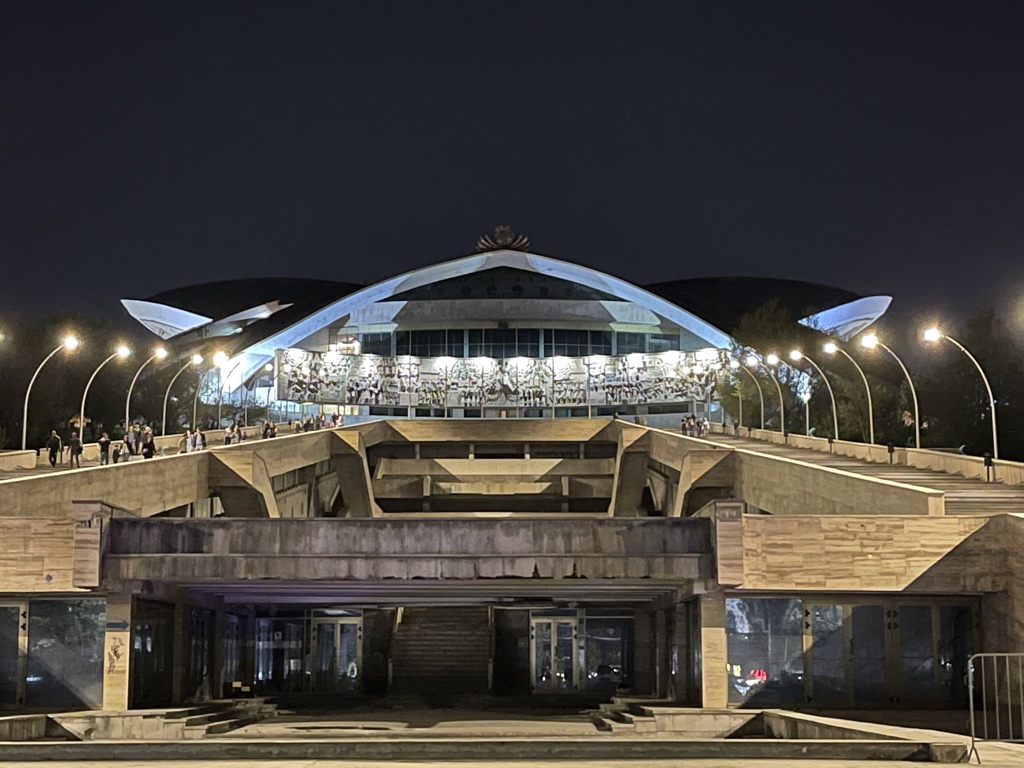
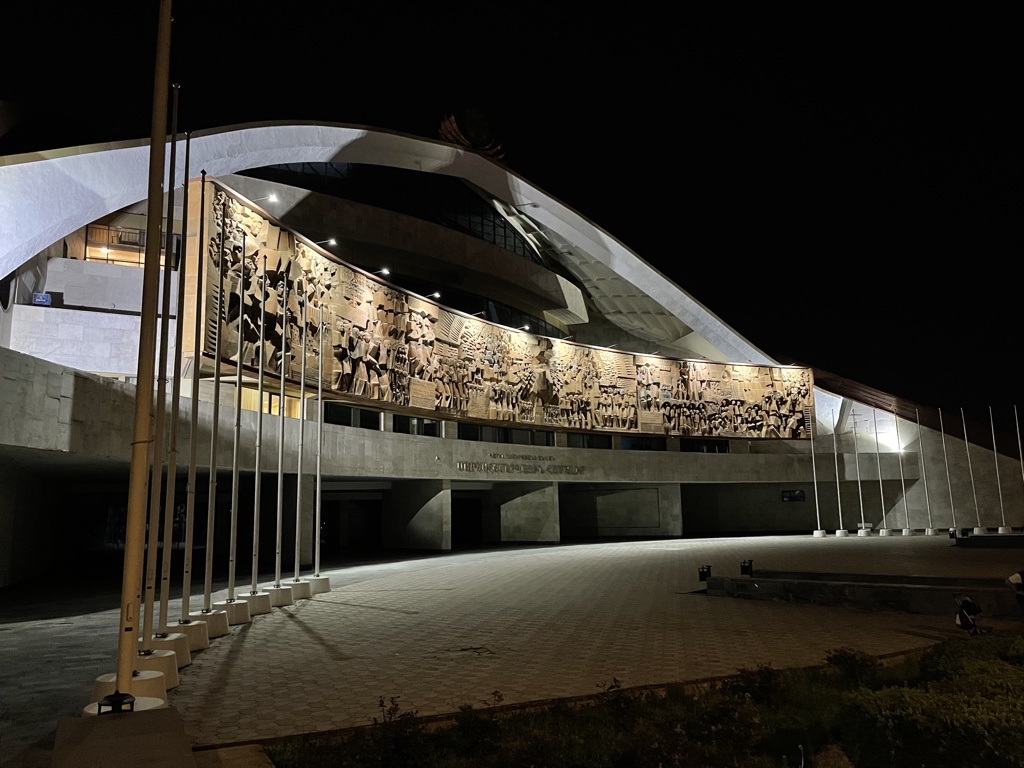
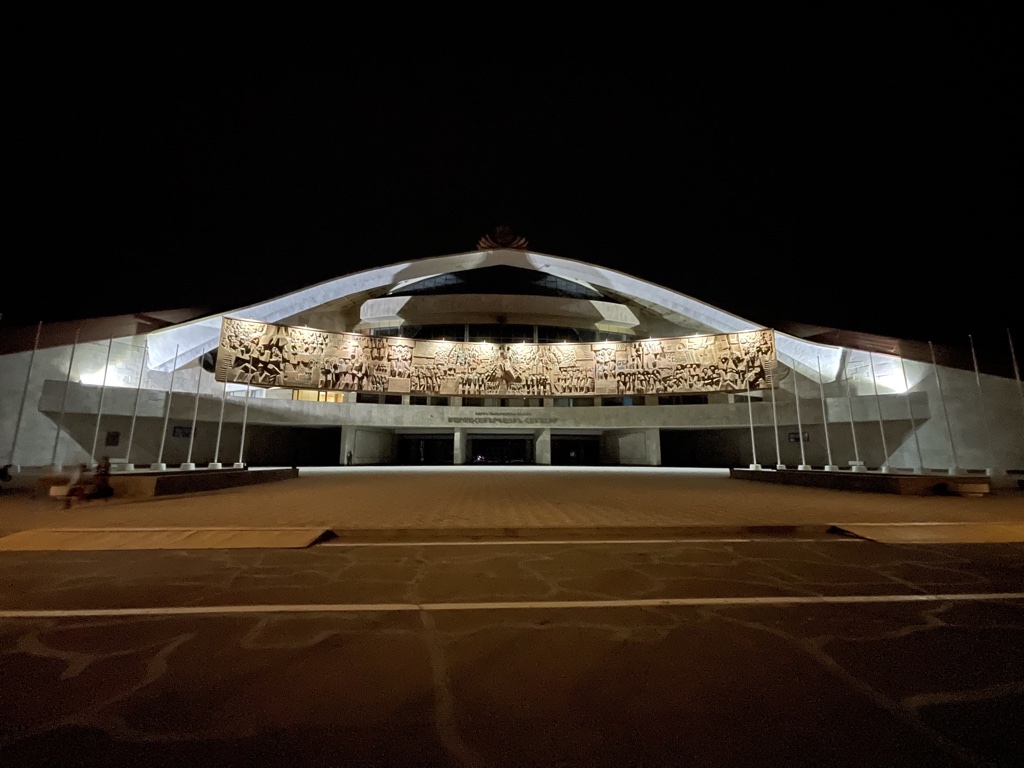

Behind the Sport and Concert complex, guests are first greeted by a sign demonstrating the countries that recognize the Armenian genocide. One of the latest to recognize was the United States as officially announced by President Biden in 2021. The state of California, home to many in the Armenian community diaspora, had recognized it in 1997.

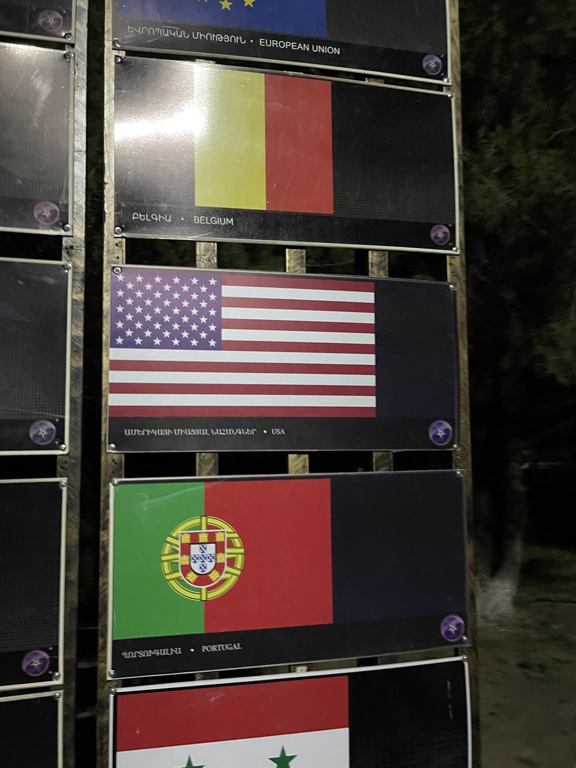
Following this signage, a walkway is lit by red lights in the shape of the stele.
“The 44-meter stele symbolizes the national rebirth of Armenians. Twelve slabs are positioned in a circle, representing the twelve lost provinces in present-day Turkey. In the center of the circle, at a depth of 1.5 meters, there is an eternal flame dedicated to the 1.5 million people killed during the Armenian genocide.” – Wikipedia
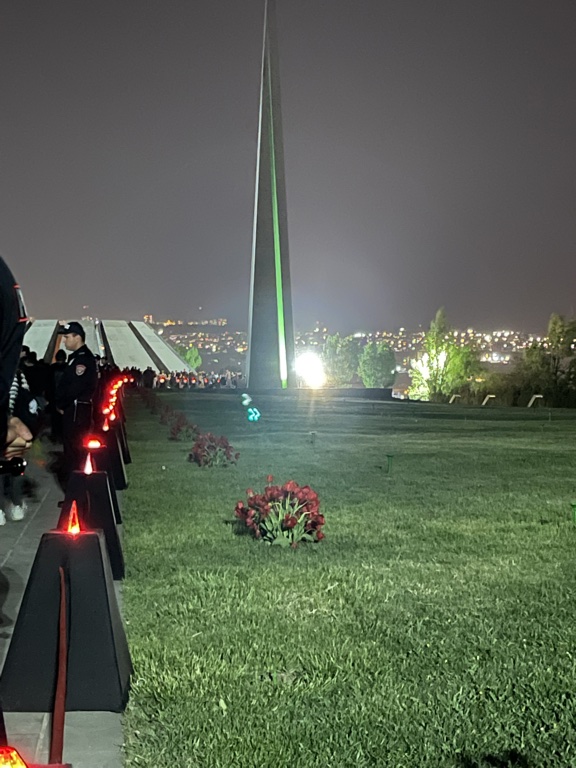
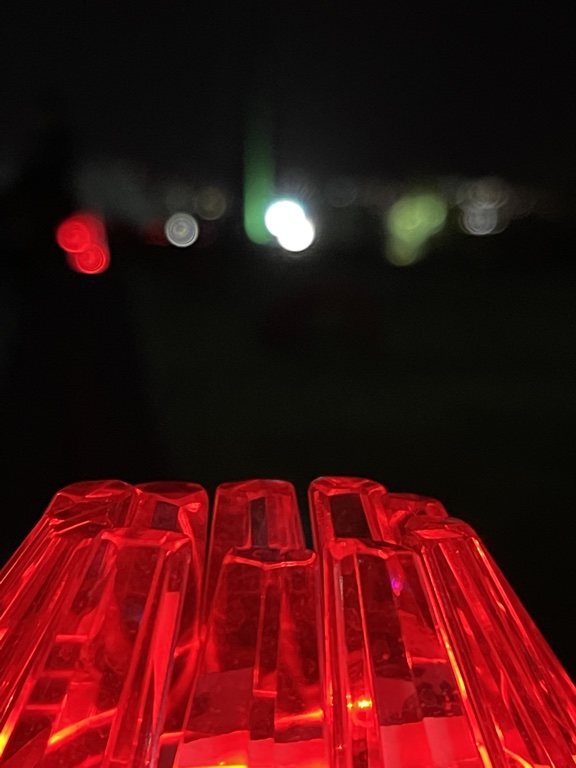
A concrete slab tomb is the first sight along the memorial.
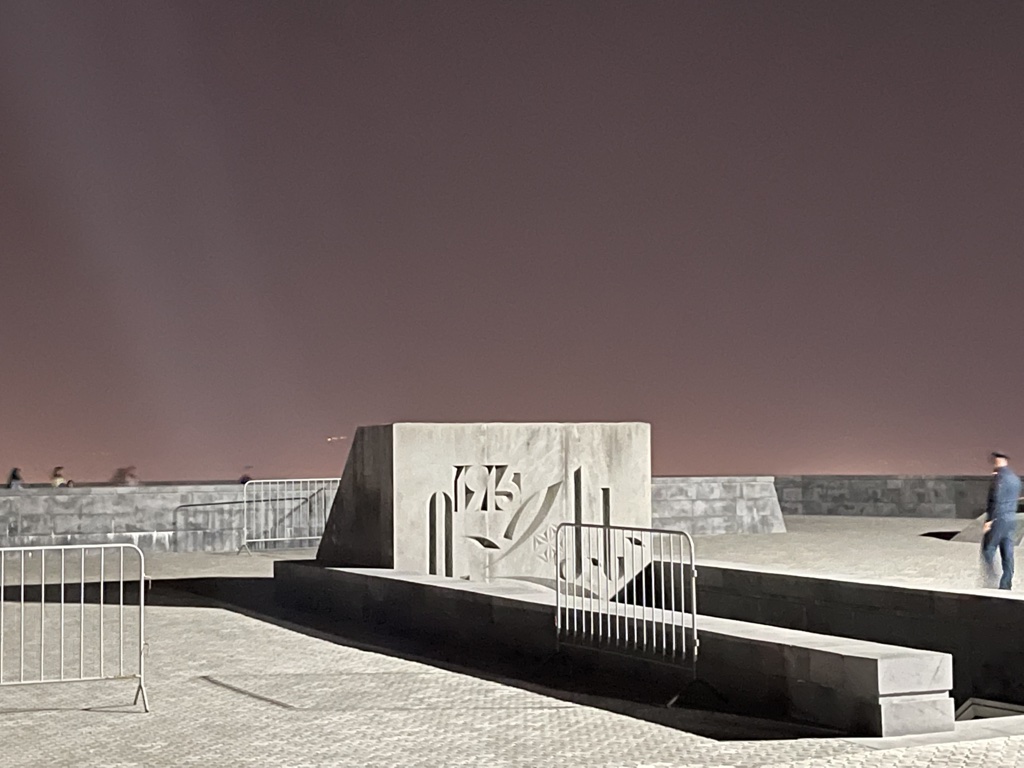
An immense amount of wreaths and flowers are laid at the stele outside the walls. Inside, around the eternal flame, visitors place their own flowers in even more astonishing numbers. It’s a rather powerful and moving scene. The group inside, the flame flickering against the walls to represent the 12 provinces of Turkey from which Armenians were expelled and ultimately died, gives the impression of an indoor gathering. On a perfect, clear night, the stars and the 100-foot spire outside were visible but all but forgotten by those laying flowers in remembrance.
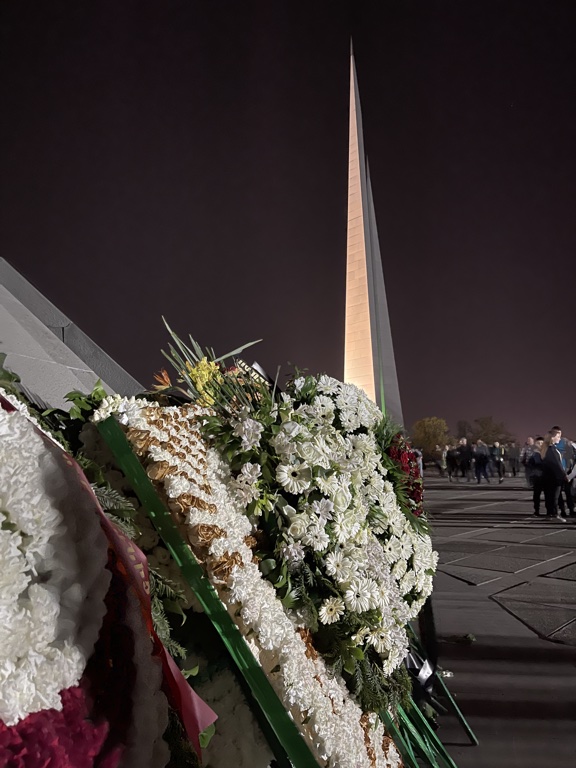
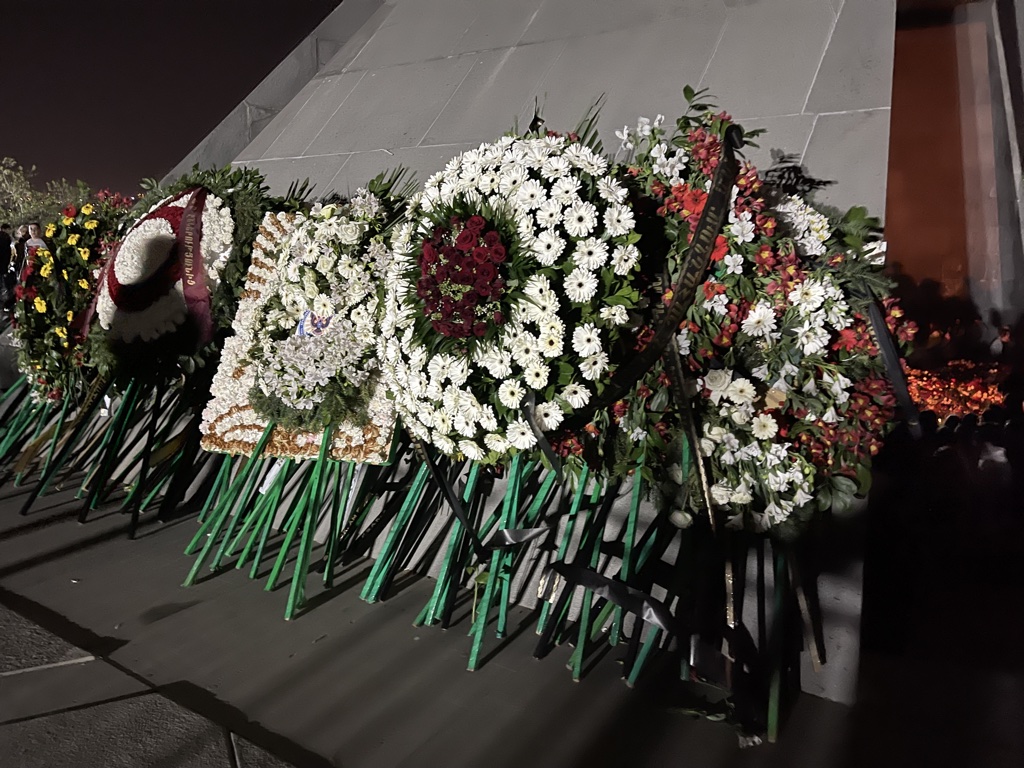


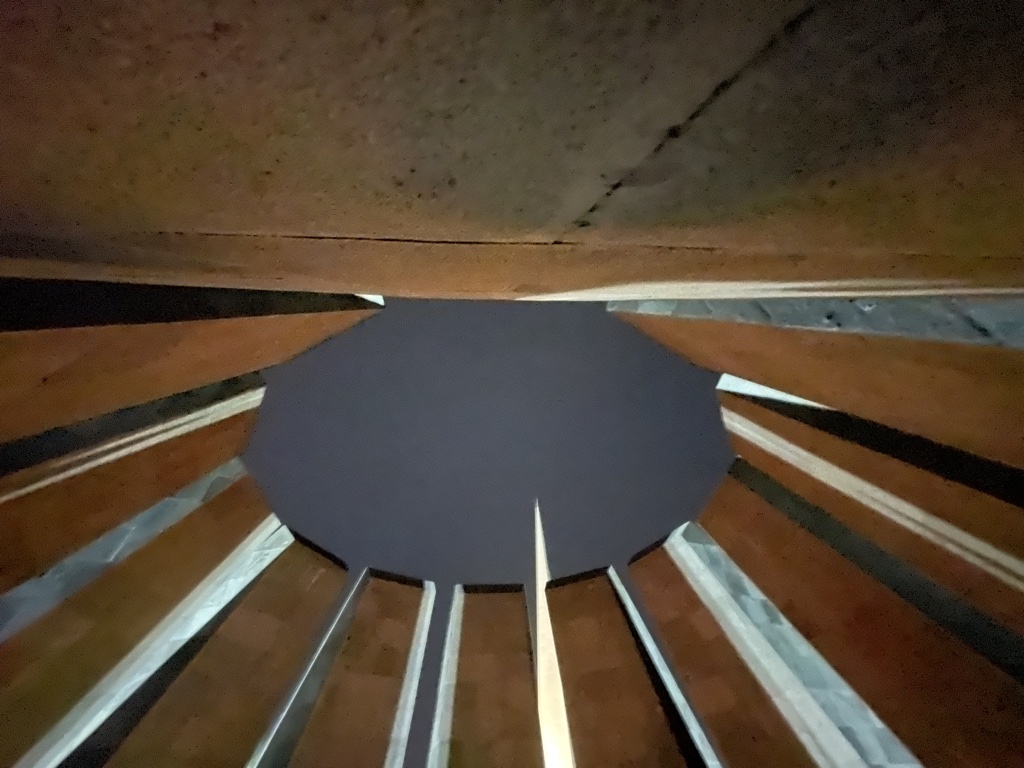
Outside the stele, the spire is visible from nearly anywhere in Yerevan as a reminder of that dark period and the many lost.
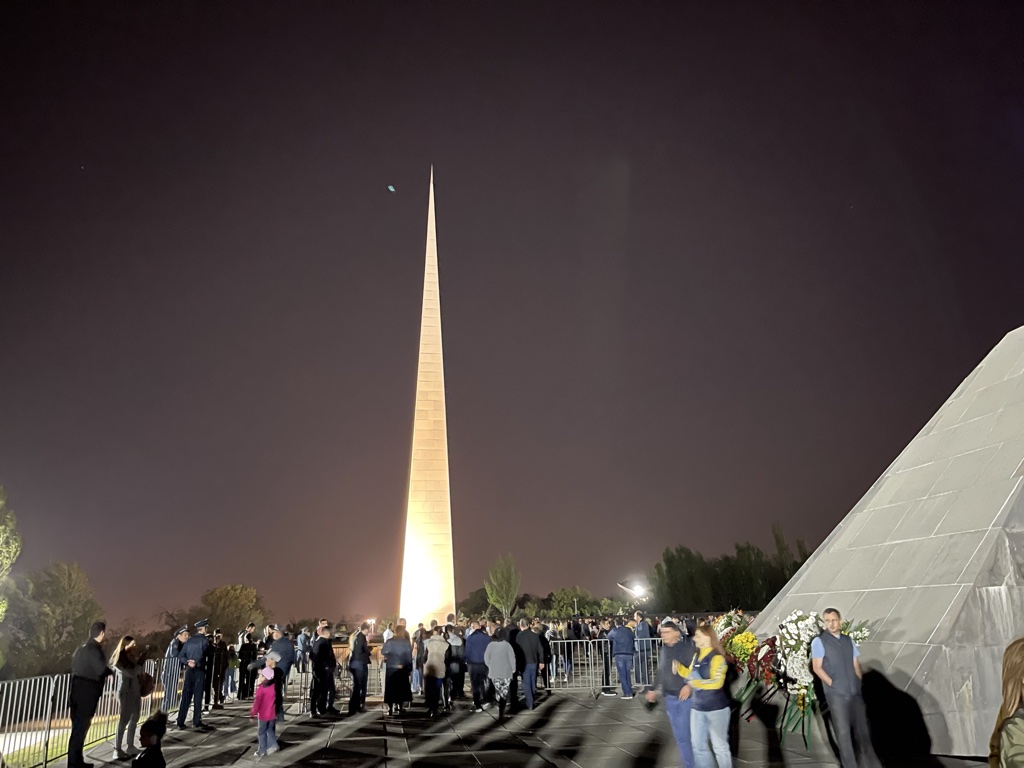

Conclusion
There are few experiences that have been so moving as walking to the memorial on Armenian Genocide Remembrance Day and one that brings me pause. So many of our travel experiences are the highest [x] or biggest [y], reviews of hotel suites, and whining about galley noise on a business class flight. This puts into perspective one of the many reasons why we travel – to participate in different cultures, and sometimes, that means reflecting on dark pasts.
What do you think? Have you walked to the memorial on Armenian Remembrance Day?


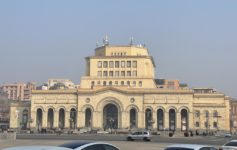

Wikipedia is wacky and subject to manipulation so don’t trust it.
It’s sad that so many Armenians died. However, the government that did it no longer exists.
Pakistan denies that genocide happened. Some countries not represented on that wall include Australia, Mexico, Peru, South Africa, Egypt, Spain, Indonesia, Thailand. Thailand and Finland were part of the Axis Powers in World War II, along side of Germany, Italy, and Japan.
You’re right, the government that did it (Ottoman) no longer exists but I do find it strange that modern Turkey is so vociferous in its denial. Often when a country recognises the Genocide or speaks about it, Turkey protests and recalls its ambassador (France December 2011, Germany June 2016).
Armenia’s Genocide Memorial Day falls just before the anniversary of the appalling Battle of Gallipoli in WW1 and there is an annual memorial attended by Commonwealth and European leaders. For the 100th anniversary of the Genocide, Turkey brought forward the date of the Gallipoli event, so that almost none were able to attend the events in Armenia. (https://www.theguardian.com/world/2015/apr/16/turkey-armenia-1915-centenary-gallipoli-massacre-genocide)
Thank you so much for this article.
I misread that (as I’m sure many did) as AMERICAN GENOCIDE REMEMBRANCE DAY. I was thinking geez, the service has gone downhill but that’s quite a hyperbolic title!
Thanks for posting this. Yes the Memorial is an impressive, powerful and thought provoking site.
I was living in Yerevan at the time of the 100th anniversary of the Armenian genocide. Naturally there were many events and programmes to commemorate it.
I recall a facebook group was set up where children and grandchildren of survivors shared the memories that they had been told by their parents or grandparents over the years. There were some incredibly moving accounts.
Historians agree this was not a genocide, it was war time. So many other nations died, including Ottomans.
Stop using political agendas to attract more comments
Take your lies elsewhere. I air your comment so all can see your distortion of the historical record.
Complete bollocks. It’s as ignorant as saying Hitler was part Jewish.
This is an awesome story – thank you so much for sharing. I never knew about this walk.
My wife’s grandfather had to play dead under a pile of other dead Armenians during the Genocide.
Amazing how Turkey still refuses to acknowledge it.